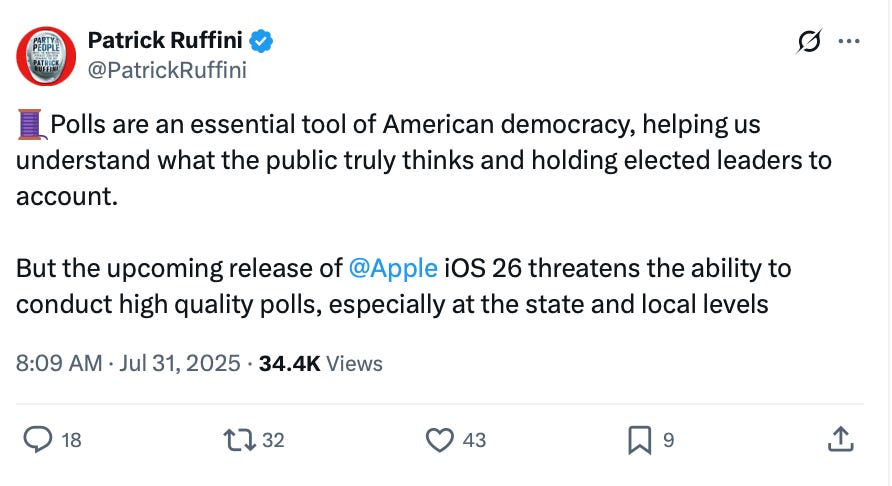iOS 26 threatens polling
A deep dive on political tribes, appreciating the Almanac and Michael Barone, Texas redraw, a new look at realignment, RCV patterns in NYC, the rise of college grads, California refugees.
No. 369 | August 1st, 2025
🗣️ Public Opinion
On X, I have a thread on how the release of iOS 26 threatens high-quality polling:
iOS 26 will move calls and texts outside of a sender’s close contacts to an unknown senders tab. Many will welcome this as a way to fight spam.
But a big unintended consequence of this will be to make it harder for pollsters to reach a representative sample of Americans.
Polling has been moving online for a while now, but for state and local polls, calling and texting the broadest possible segment of the public is often the only way to get a representative sample.
Online polling has come a long way and can be a great option for national and large area polls.However, online polls are largely opt-in and aren’t always feasible at the local level.
The polling industry has adapted to the death of landlines first by moving to cell phone interviewing and more recently to texting.The high-quality probability polls like NYT/Siena that you love around election time rely excl…
Keep reading with a 7-day free trial
Subscribe to The Intersection to keep reading this post and get 7 days of free access to the full post archives.



